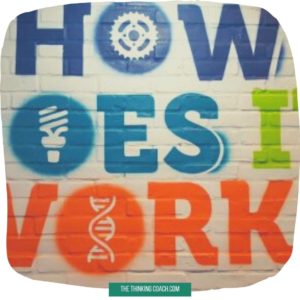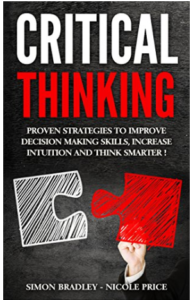Table of Contents
Overview
We are in the middle of a pandemic, or so it has been defined. This is our current global problem, which affects us all. This is where we needed problem-solving skills and a high level of analytical thinking more than ever.
But it wasn’t there!
What we witnessed worldwide is the lack of problem-solving expertise, analytical thinking, and emotional intelligence, which made things far worse than they could have been.
The “human ecology” or the collective level of response didn’t allow the attitude, the thinking, the emotions, the necessary agreement, and the environment that would solve the problem.
I would express here that even without having prescribed medicine and vaccine we would have been 70-80% passed this crisis had there been true teamwork and problem-solving skills.
What is Problem-Solving?

We usually define something to be a problem when things don’t happen as we think they should or what we expect them to be, which are sometimes “Out of the box” unexpected events that throw us out of our comfort zone.
So before we approach problem-solving let’s make sure we clear assumptions and expectations out of the way. Because they will deliver to us a distorted picture of what the case is.
And these words “what the case is” are at the very core of the analytical thinking that is essential to problem-solving.
When it comes to understanding what problem-solving is about we enter a fascinating world that requires an understanding of the big picture of analytical thinking.
We need to have a lot of information to understand what we are dealing with & What The Cae Is!
Not biased perception, but facts, data, facts, data, facts, data…need I continue?
The main parameter concerning problem-solving is the ability to think outside the box, which in itself requires training and personal development.
The questions need to be asked: What does it mean to think out of the box?
- What box?
- What is it made of?
- How do you get out of it if all your life you are in it?
- What training does it require?
- Are you willing to invest in your own development?
- Is your organization willing to invest in your training?
You’ll understand from this article that the first thing about problem-solving & Analytical thinking is that the solution to the problem can’t be found where the problem is.
So you need to understand the nature of the environment where the problem grew.
In other words, the soil that grows the seed of the problem is not the soil that grows the seed of the solution.
Attitude

Attitude is key to a successful Problem-solving process.
The first attitude to have is that when we see a problem we only see a manifestation & a symptom of something, not the cause. This is what a wise problem-solving leader would think.
They would understand that because they are looking at a symptom and not a cause, they need to figure out what circumstances gave “birth” to the problem.
Therefore such a leader will be not tempted to suffice with “bandage solutions”, which offers short-term solutions only.
Another important part of the attitude of problem-solving is the emotions we bring to the table to support analytical thinking.
We can bring worry & fear (often the case) which limits the scope of our ability to analyze the problem which will limit our perception
We can bring ambition which may well have the same result. There’s a saying “ambition is blind”, which is a state of mind of wanting something so much that one misses the obvious.
Or, we can bring belief, hope, encouragement, teamwork togetherness, positive thinking, empathy, and carefulness, all of which, will increase perception, understanding, and the ability to bring the best solution to a problem.
Neutrality

Then there is neutrality. Huge personal development affects the level of problem-solving in a huge way.
This first means being cool, steady, factual, somewhat aloof (creating space between you and the problem), and seeing it for what it is. (Wise saying… “the heart of the matter can only be seen from afar”)
Often times we encounter problems that simply need not doing anything and others doing everything. So…keep it simple! Don’t get personally involved. Zoom out and look at what is going on neutrally, as if it doesn’t concern you.
Your ability to do so will help you engage in analytical thinking of the highest level without interference of the wrong emotions.
This “zoom-out” in an uninvolved way attitude opens up to the big picture of what is possible without being sucked into the problem or into the environment where the problem arose.
That is precisely the attitude that is most effective in problem-solving.
When you get the attitude right you are on the right track because your emotions and thinking will align to form a body of intelligence that allows you to see more, think strategically and understand the depth of the problem.
7 Steps to Problem-Solving

- Locate the problem – Understand the problem thoroughly, which means what actually caused it
- Engage in short term and long term analytical thinking
- Critical Thinking – Ask open-ended questions to reveal the big picture- Why and What questions.
- Avoid How question before you thoroughly understood What and Why questions
- Remember that solving a problem is measured by long term solutions
- Protect your problem-solving by making sure that you don’t provide the problem with a fertile ground to grow in the future.
- Revaluate the process by connecting emotional intelligence to analytical thinking. In other words, make sure that your problem-solving process makes sense and feels right.
Step 1 – Locate & Understand The Problem
Why Do You Do What You Do?
Before you engage in problem-solving give yourself space to thoroughly understand the problem. Surround it with new ways of looking at it even if you encountered it before.
Very important in this is to think now first before you go back to your experience.
Intelligence seemingly comes from nowhere if you give space to the problem “to talk to you”.
Firefighters often tell about fires that talk to them. It may sound strange but it is because humans have a 6th sense and they often use it minimally because they rush forward prematurely.
Step 2 – Long term Vs. Short Term
The short term problem-solving is always very different from the long term considerations. These two aspects should be evaluated separately.
Otherwise what seems to be a success in the short term can, and often will, will amount to a total failure in the long term.
Step 3 – Critical Thinking 
Focus your analytical thinking on the question of “WHY” after you gather the facts…pure facts, not biased.
Ask WHY in all possible ways. Take nothing for granted even if you think you know the answer.
The Reason Why You Do What You Do is the most critical to the problem-solving process. It is your motivating Engine to move forward.
I have trained thousands of professionals worldwide and I have discovered that they often neglect the required analytical thinking process that would reveal the big picture of considerations that should precede action.
Instead, the process is “hot-wired” and actions are pursued prematurely, not realizing reality has changed. It changes these days very quickly.
It seems that the adrenaline of “Doing” trumps the wisdom of “Being”.
They should be a 50/50 partnership. Being is the analytical thinking part Doing is the solution part.
We all hear 3-4-year-old toddlers constantly asking the question WHY? Why this, why that, an unending curiosity that seems to be a natural process of growth and development.
Obviously, there’s a mental hunger to understand the process behind the process, to understand what moves things, they want to understand the Context.
It is obviously a natural & instinctive process with every child. Why does it mostly disappear in adult life?
The answer is pressured from inside and outside. Mostly inside. You just need to overcome that aspect if you want to excel in problem-solving.
That means that if your reason is powerful enough it will make your action extremely effective.
Step 4 – Avoid How questions
How questions can be very deceptive as they imply that if you know how to do something you can do it.
It implies that solutions are linear. I can tell you for sure, after over 25 years of training professionals in problem- solving that that is not the case!
So ask Why and What questions because they will get you to the big picture and will reveal a lot more than How questions.
I hear people always ask “How Do I Do That” and “How do I get from A & B” and I ask them “why do you want to get to B from A?”
After being mildly irritated at my seemingly juvenile question they start discovering a whole wealth of intelligence that they didn’t see before.
How questions tend to hotwire the process of problem-solving by neglecting the Being of analytical thinking part and rush to Doing.
Solutions take time to appear, especially if you get to really understand the problem and not what it seems to be.
Step 5 – “Long Term” First…Always
Decision-making and problem-solving should always look at the long-term consequences before it moves to action.
What is the point of affecting a short term solution that will defeat the long-term?
Long-term analytical thinking will mean that it takes professional training and development that is able to gain perceptions not readily available.
Long term consequences are hidden compared to short term analysis that seems to be obvious.
You need to always think about how these 2 connect when you engage in problem-solving.
Step 6 – Protect Your Problem-Solving Process By Understanding The Fertile Ground Concept
Part of the long-term solution is to learn from the problem-solving process and result so as to prevent the growth of the seed of the problem, so it won’t reappear.
This is based on the logic that a problem is only but a symptom of what caused it. Part of understanding the problem is to understand what caused that which requires neutral analytical thinking without hiding anything.
So get to understand the conditions that Fed the problem and make sure that part of your long-term problem solving is not to let the same “earth growing” conditions reappear.
This understanding of the “fertile ground” concept is characterized by long-term backward analysis. You look as far back as possible to understand the conditions that allowed the problem to appear.
Step 7 – Reevaluation…Common Sense And Emotional Intelligence
“Don’t leave home without it!” Make sure that before you act on your solutions that you thoroughly review the problem-solving process and checked how you feel about the whole thing. If it feels right, not perfect, proceed to the execution state.
If it doesn’t, don’t! Allow your feelings space and voice in your problem-solving process. They have a lot to tell.
7 Steps to Critical Thinking

Problem-solving requires the essential skill of critical thinking, without which you will be missing a fundamental ingredient.
Critical Thinking that includes reasons that empower actions requires a thinking process, which has the following 7 ingredients:
- Consider the situation anew, start Now, and only then look at past experience
- Takes into account facts (not opinions)
- Evaluate short and long-term consequences for intended actions before you do anything
- Consider worse, best, and likely scenarios
- Make sure that you prioritize your reasons and that they don’t reflect your comfort zone
- Make sure that the reasons are connected to a genuine need (not just a wish)
- Make sure that the reasons are connected to a greater purpose. Take for example the story of the 5ft 5 inches 140 lbs mother who had to save her son from underneath a car, and alone was able to lift over 2000 pounds of metal!!!
No way she could ever do it if it wasn’t critical.
The point is that Critical Thinking can connect us to an extraordinary level of intelligence and abilities. That is How to develop Critical Thinking!
What Is Critical Thinking About In The Corporate Level

It is important to note here that it works in exactly the same way at the corporate level.
When it comes to problem-solving in the corporate world if you and your team need to come to a decision, you had better make sure you engage your critical thinking process before making any decision.
It very often makes all the difference between success and failure….and mind you, very often what seems to be a short-term success is a long-term failure.
Your reasons and motives must be sound to have the power and energy to carry you through to success.
The key understanding is, that the level of reason and motive behind the intended action will be expressed through the action. The better the reason, the better the execution level. Always!
Critical Thinking Optimized Through Healthy Teamwork

My advice…try to engage critical thinking in a think-tank, within a group dynamic.
Teamwork is the best scenario to think through issues thoroughly. That depends, of course, on the level of trust and openness that exists in a team.
Teamwork, as it should be, is the best arena for the smart decision-making process. It can minimize the margin for error and prevent falling into unnecessary traps.
Finally
Please understand that problem-solving is a holistic process and not some linear one-dimensional analysis.
Real problem-solving is an opportunity to get a fresh understanding of possibly recurring problems and a way to affect real changes.
It is a panoramic view of a big picture that can possibly solve many problems before they appear.
My experience in training professionals in different organizations around the world that when problem-solving is done right it contributes to the changing organizational culture and bringing the leadership and the workforce closer to each other.
It can alter perceptions and make leadership much more relevant to the success of the organization.
Care of a leader always shows up in their problem-solving attitude, their thoroughness, and attention to detail.
The Thinking Coach Leadership Training Seminars which are part of a broad Soft Skills Corporate Training Programs take professionals through a series of workshop exercises to achieve a critical thinking state of mind that helps professionals engage in a high-level of decision-making & problem-solving.
These seminars are absolutely essential in these times of change and make a real difference in the quest for Critical Thinking.
What makes the Thinking Coach Leadership Development Training Courses programs unique is that whatever the course is about it always redefines in a higher level what teamwork is about in the organization.
The ability to engage in critical thinking in problem-solving for an organization depends on the level of teamwork that can be exhibited.
Regardless what the soft skill territory that I train professionals, and as excellent as that seminar may be, the deciding factor of whether or not the learned skills will be incorporated and applied comes down to the level of teamwork in the organization.
Eli Harari
The Life Coach for Professionals™
Image source: Needpix



Pingback: A Paradigm Shift In Thinking About "What Is A Success"
Pingback: What The Decision-Making Process Is About- A Paradigm Shift In Attitude -1
Pingback: Improve Your Performance at Work - 3 Creative Tips - The Thinking Coach
Pingback: 9 Steps Of Creative Thinking Training Process Of Problem Solving - Part 2